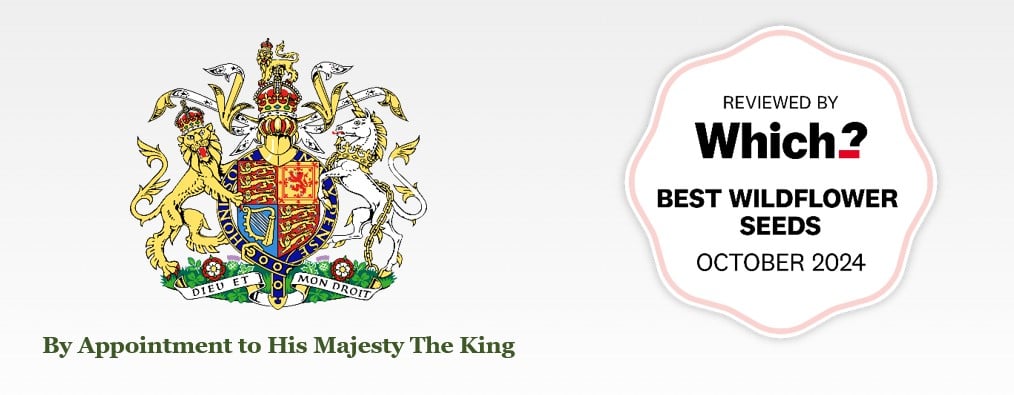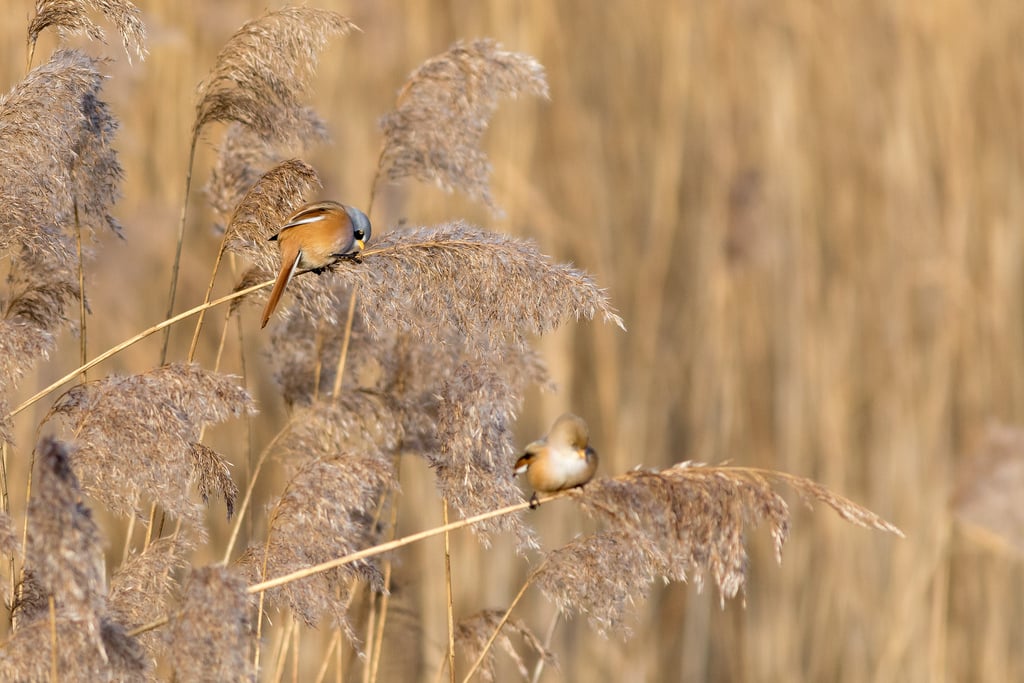Description
Common Reed is a very tall (1 – 3+ metre high) stout perennial grass, often forming extensive beds with its vigorous creeping rootstock. It has wide flat greyish green leaves which turn brown and are shed in winter leaving hard hollow persistent cane like stems: ‘reeds’ which are harvested from managed reedbeds for thatching roofs. Its large feathery flowers are produced later than most grasses (August – October) and can be an impressive sight en masse swaying in the breeze.
Habitat Information
Common Reed is a very widespread common plant of swampy wet ground and fens, and of shallow flooded ditches, rivers, lakes and ponds. Salt tolerant forms are also found in brackish swamps and lagoons. It often forms dense single species stands ‘reedswamp’ particularly on sites which are flooded for most of the year and are supplied with nutrients.
Some natural reedbeds are managed specifically for reeds for the commercial production of thatching material; particularly ‘Norfolk Reed’ from the Broads and coastal wetlands.
Common reed is sometimes planted to create new reedbeds as wildlife habitat and to help protect and stabilise pond and lake shores. It is also planted in filtration reedbed systems for the treatment of waste water.
Growing Information
Common reed germinates readily from seed. A 1g packet of reed seed sown in seed trays can potentially produce thousands of plants for planting out once mature enough.
The establishment and growth of young plants in wet or flooded environments is somewhat precarious. Flooding and salinity both inhibit germination. Drowning will kill seedlings and immature plants.
Whilst some success has been reported sowing reed seed direct on drained and exposed mud in May (for example in the post-war reclamation of Dutch polders), it is usually better to raise plants from seed in a nursery for planting out.
Semi-mature pot grown plants with strong shoots and rhizomes developing give the plants the potential to grow away quickly after planting and withstand flooding and frost damage.
Once established reeds can spread rapidly forming dense stands. Reedbed management for thatch or for wildlife is a big topic. The essential practical points are:
Shallow flooding through most of the year encourages reed development and dominance by suppressing other weeds such as nettles. (Reeds growing in flooded or waterlogged ground have the advantage because they can ‘breath’ by transferring oxygen through their hollow shoots to their roots).
Cutting sections of reedbed on a rotational basis will open up the reedbed creating open edges and areas of different structure and stage of development; this is good for birds and other wildlife using the habitat. The main cutting management of reedbeds usually take place between leaf fall (Nov/Dec) and end of March (before the new shots emerge and wildlife become active, eg. amphibians and grass snakes).
Reed dominance can be reduced by cutting, where fertility is not too high. A summer cut and removal of ‘Marsh hay’ in July can make space for other plant species to grow. Any summer cutting needs to take account of potential disturbance to nesting birds. Cutting back new reed shoots (‘colts’) below water level in spring will have the effect of drowning and restricting new growth (eg to maintain areas of open water).
Reeds can be cut effectively with either machines or a scythe. If cutting by scythe fitting a ‘bow’ to the scythe helps move the cut material to one side.
Availability
For such a productive plant the yield of seed is surprisingly poor and unreliable. It is also quite difficult to harvest and extract its fine seeds from the feathery heads in winter when it ripens. This means that we have only very limited stock availability. We can only offer in small quantities suitable for sowing to raise plants.


